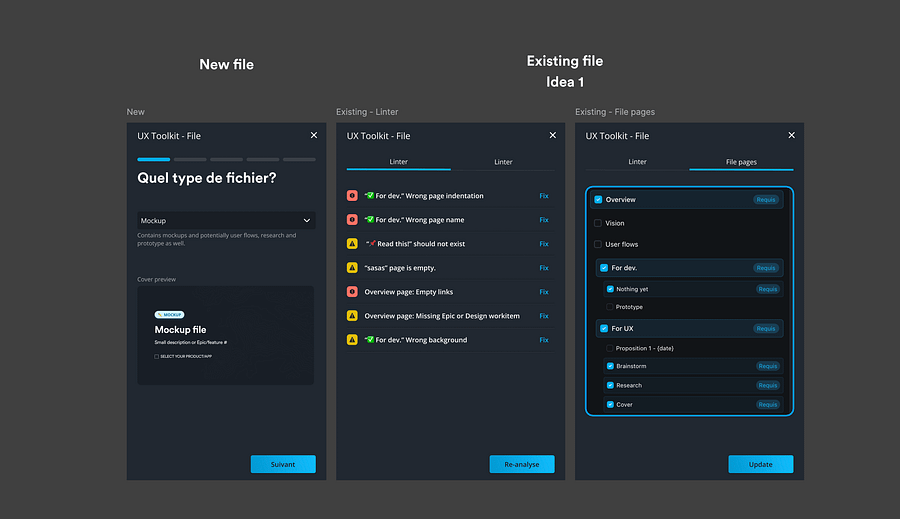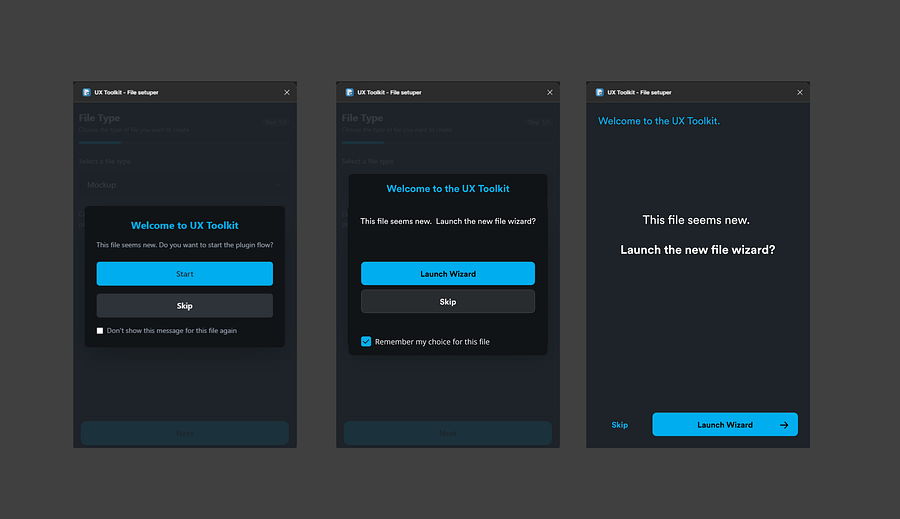TL;DR
- 70% time saved on file compliance tasks
- Compliance adoption accelerated across design teams
- Reduced errors & manual fixes through proactive audits
- Empowered designers to focus on design, not processes
The problem
With the rollout of new compliance guidelines by the Design Ops team, designers were burdened with repetitive, manual tasks to align Figma files with standards. Templates existed but weren’t enough. The process was tedious, error-prone, and a bottleneck in daily workflows, reducing team efficiency.


The Opportunity
I identified a clear need to automate file compliance directly within Figma. By understanding the workflows and pain points of designers, I proposed building a Figma Plugin Assistant that would:
- Automate file structuring and naming conventions
- Audit existing files for compliance
- Offer guided, no-friction correction flows
Generative AIs helped me in the coding phase.
Design & UX Approach
Giving context to the generative AI
Before diving into development, I had to document the current specs to 100% understand how things are built inside Figma. That step was crucial for me in order to get efficient code from the Gen AI tools (context is key!).



Initial Focus: File Generation Mode
I designed a lightweight, frictionless interface that would seamlessly fit within Figma’s workspace, using the company’s design system.
This design approach ensured that the plugin augmented designers’ workflow without adding cognitive load, keeping interactions efficient and self-explanatory. Key features:
- Auto-create standard pages (Cover, Overview, Artifacts)
- Apply correct naming conventions
- Pre-fill project info dynamically

Evolution: linter mode
After adoption of the initial version, we extended the plugin to include:
- Compliance auditing (file structure, naming)
- Real-time detection of issues
- One-click fixes with clear actions

Smart Mode Switching
The plugin detects if the file has already been structured and toggles between File Generation and Linter modes automatically.

Impact
- 70% reduction in time spent on file preparation tasks
- Increased adoption of Design Ops compliance standards
- Eliminated friction between enforcement and designers’ productivity
- Boosted team morale by reducing tedious, manual workload
- Significantly reduced errors in file structuring and naming

Outcome & Reflection
This plugin became a catalyst for transforming compliance from a chore into an embedded, fluid part of the design workflow. It fostered a culture of quality, autonomy, and operational efficiency.
Beyond solving a tedious task, it sparked discussions around design tooling scalability and initiated further automation initiatives within the team.
